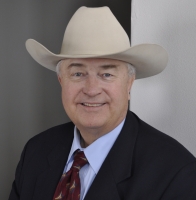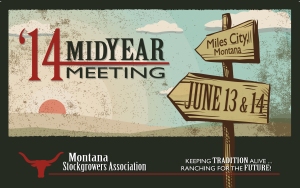Costly Closings: USDA ARS proposed lab closures affect producers nationwide
By SUE ROESLER, The Prairie Star
USDA-ARS (Agricultural Research Service) center closures affect not only the producers in the state they are located in, but also farmers throughout the nation lose out on the benefits of national collaborative ag research.
Seventeen USDA-ARS research centers/labs may be closed under the administration’s 2018 final budget proposal delivered to Congress in June.
Of those 17, four ARS labs are part of this upper northern region, including centers in Dubois, Idaho; Miles City, Mont.; Morris, Minn.; and Brookings, S.D.
The USDA-ARS Fort Keogh Livestock and Range Research Lab in Miles City, Mont., mirrors what producers do in the real world – raise cattle on native prairie and improved grasses on pastures and rangeland – and it has been conducting research there since the 1930s.
“Fort Keogh researches not only cattle but grazing rangelands, grasses and forages – that’s for a start. The center is a such a big fact-finder for those of us who run cattle on grass,” said Fred Wacker, first vice president of the Montana Stockgrowers Association and the owner of Crossfour Ranch near Miles City, Mont.
Wacker, a third-generation Montana rancher, has never been hesitant to pick up the phone and call Fort Keogh when he has had any questions. He wants to know the kind of grasses and other forages his herd would thrive and perform best on.
What he has learned at Fort Keogh has translated over to his all-natural beef program. He said his program is the exact fit for the beef program newly opened in China.
Fort Keogh is one of the largest research facilities in the world with 50,000 acres of native rangeland; 4,000 acres of pastures and 1,500 acres of irrigated crop and pasture land.
Line 1 Herefords originate from Fort Keogh and have had profound impacts on the cattle industry. Nearly 70 percent of all Herefords in the U.S. have Line 1 genetics in their pedigree, and descendants still form the herd at Fort Keogh.
Scientists at the ARS Fort Keogh Livestock lab participated in sequencing the cow genome as part of an international consortium. L1 Dominette 01449, a Line 1 Hereford, was the source of the DNA used to decode the bovine genome.
“Fort Keogh is very important to cattlemen in the U.S. They researched the reasons for bloat, when and how to condition my cattle, and they’ve done a lot of research on water and minerals,” Wacker said.
Their studies on grasses have been unmatched – what grasses perform better in drought situations, for instance. Fort Keogh is the expert on burning parts of the range to bring back better grasses.
The lab’s research feeding heifers and cows prior to breeding to maximize pregnancy rates found producers didn’t need to feed the industry standard to have females breed back.
Andy Roberts, ARS animal scientist at Fort Keogh, said, “The beef industry has traditionally recommended that cows be fed to a minimum body condition and heifers be fed to a recommended 60-65 percent of mature body weight pre-breeding in order to achieve high pregnancy rates.”
Roberts and other scientists at Fort Keogh found nearly the same pregnancy rates occurring in the limit-fed heifers as in the controls. Both were fed a mixture of corn silage, alfalfa, and a supplement, and the limit-fed heifers received 80 percent of what the controls were fed. The controls could eat as much as they wanted.
Another lab that could be closed in the Mountain region is the ARS U.S. Sheep Experimental Station (USSES) in Dubois, Idaho, near the borders of Idaho, Montana and Wyoming.
“It is the only ARS sheep research center in the nation – the only one,” said Mike Corn, president of American Sheep Institute, who runs a cow/calf and sheep operation near Roswell, N.M. “Without it, sheep and wool growers couldn’t operate in today’s economy.
This is the third time the USSES has been on the chopping block, and sheep producers and organizations have gone to bat to save it every time.
Corn said the U.S. would become more dependent on sheep and wool imports from other countries if the USSES were closed.
The station was established in 1915 by President Woodrow Wilson and has been grazing sheep on the diverse landscape for more than 100 years.
“If we close the station that is in such a unique environment in the intermountain west where 62 percent of all sheep in the country are raised, we will be losing relevant research to most sheep producers, especially those with large flocks,” Corn said.
No other station conducts research into the unique challenges that confront sheep producers across the nation. The station regularly conducts research such as, the best grazing techniques, diseases and prevention, and developing new breeds.
“The sheep station has made germplasm available to ranchers and has developed three of the most important sheep breeds – the Columbia, the Targhee and the Polypay,” Corn said.
USSES has also conducted extensive research on the effects of fire on rangelands, the health and recovery of the sage grouse and its habitat, controlling invasive and noxious plants, and grazing management plans.
“They have found that grazing sheep can coexist with other wildlife – including the sage grouse, the grizzly bear and elk can coexist and have been doing it for more than 100 years,” Corn added. “That is huge for all us sheep producers.”
The North Central Soil Conservation Research Lab in Morris, Minn., is also on the proposed closure list.
Sue Dieter, the coordinator of the Barnes Aastad Soil and Water Conservation Research Association, said North Central has provided invaluable research to rural farming and ranching in the region and across the U.S.
USDA-ARS (Agricultural Research Service) purchased 15 acres of land near Morris, on which to construct the laboratory buildings. But there was no land available on which to conduct long- term water run-off and soil erosion research. Since the Morris research program was part of a larger national study on soil erosion, certain criteria had to be met with respect to soil type.
The Barnes-Aastad Association was thus formed as a non-profit organization for the purpose of purchasing land, which in turn could be leased, to the Research Laboratory for long- term field experiments.
Soil is an invaluable resource. Without knowledge of how to feed biology underneath the soil with crop diversity, farming practices and adequate residue, soils are subject to wind and water erosion.
North Central’s top 10 accomplishments include:
• Developing new and alternative oilseed cropsthat provide new revenue streams for improved cash flow, pollinator health and nutrition, and soil erosion control.
• Pioneered development of novel double-cropping strategies to sustainably intensify food and biofuel productionwhile promoting soil health and efficient use of agricultural resources.
• Improved pollinator health, abundance and diversityby the development of new crops and cropping systems.
• Led development and supported a large nationwide data baseto quantify the impact of agriculture on greenhouse gas emissions.
• Led development and supported a large nationwide network databaseto quantify the impacts of crop residue, such as corn stover, on soil properties.
• Developed best management practicesfor protecting soil resources.
• Created new non-chemical and environmentally friendly weed control alternatives(abrasive grit applicator) for organic weed control.
• Identified heirloom wheat and cornfor improved food security and nutrition.
• Developed economical wintercrops that sequester nitrate and eliminate nitrate losses to ground and surface waters.
• Accelerated development of green jet fuelfrom oilseed feedstocks.
Another USDA ARS lab closure is the North Central Agricultural Research Laboratory or Integrated Cropping System Research Lab in Brookings, S.D.
Shannon Osborne, Ph.D., a research agronomist with North Central in Brookings, S.D., has been conducting research on incorporating cover crops in current production systems for the past 10 years.
Cover crops feed the biology in the soil in unique ways because they utilize many different types of crops.
One producer in North Dakota, Gabe Brown, said the use of cover crops has allowed him to not have to use fertilizer anymore. His yields have increased substantially, as well as the organic matter in his soils.
Other proposed USDA-ARS research laboratory closures include two ARS labs in Arkansas, one a partial closure; one in Florida; one in Illinois; one in Louisiana, one in Maine, one in Massachusetts, one in Mississippi; one in Missouri, one in Texas, one in Oklahoma and a partial closure at the Aquaculture Production worksite in Wisconsin.
This year, in 2017, the USDA-ARS is officially 54 years old. It continues to serve U.S. producers, and the labs work in concert with each other, so vital research is available to anyone.



















